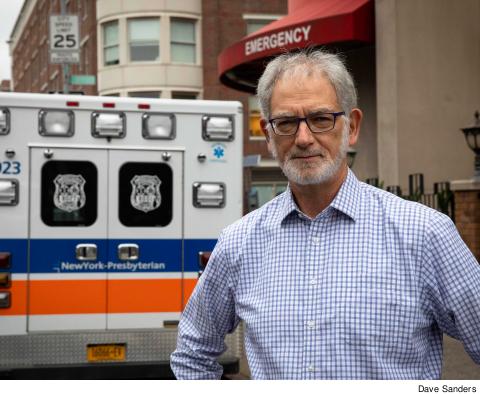Weekly tests are not enough
 |
CUNY’s weekly COVID-19 testing mandate for unvaccinated faculty and staff in place since October 7 may not be the best approach to avoid the spread of the coronavirus in the workplace, said Steven Markowitz, professor of environmental sciences at Queens College and director of the college’s Barry Commoner Center for Health and the Environment.
“I don’t think testing once a week actually does anything. It misses at least a couple of days of the week in terms of capturing the infection,” said Markowitz in an informative virtual session organized by the PSC Environmental Health and Safety Watchdogs on September 30. “It allows the infectiousness to occur for a number of days.”
TWICE A WEEK
Markowitz offered an example: If a worker gets infected during the weekend – usually when people socialize, travel or attend large gatherings – a test would not detect the infection by Monday and probably not by Tuesday. That would mean that this individual could potentially spread the virus throughout the week until the test is performed again the next Monday. Yet, testing twice a week, even with antigen tests, could detect the infection on Thursday.
The Centers for Disease Control and Prevention (CDC) do not offer guidelines regarding the frequency of COVID-19 testing in the workplace Markowitz said, but his suggestion was to test workers twice a week to reduce the spread of the virus. “This is what I think makes sense as of today,” he said.
The period of detectable infection varies depending on several factors, such as the viral load, the biological susceptibility of the individual infected and the rate at which the virus replicates once it has reached its host’s cells.
The most accurate COVID-19 test, the RT-PCR (reverse transcriptase–polymerase chain reaction, which is the most common of the nucleic acid amplification tests or NAATs), can detect the virus within one to three days of the infection.
ACCURACY DIFFERENCES
The other common option: the rapid antigen test, has a lower level of sensitivity, between 60% to 80%, compared to 95% for the RT-PCR, Markowitz said. The rapid antigen test can also miss the virus for longer.
The RT-PCR is clearly a better option for certainty. However, it takes at least 24 hours to deliver results, compared to the almost immediate results from the antigen tests.
CUNY is administering the Linea RT-PCR tests to unvaccinated employees or those who prefer not to share their vaccination status, as well as to students with approved religious or medical exemptions. If these people are on campus or in the office weekly, the tests are mandatory for them every seven days.
Otherwise, anyone who enters CUNY premises must prove they tested negative for the infection within the previous seven days.
In his presentation, Markowitz made clear that he was not referring specifically to CUNY’s policies. Yet, he suggested that a better approach to detect the spread of the virus in the workplace would be to administer rapid antigen tests, so officials could know right away if a person is potentially infected.
“Workplace testing of people without symptoms, [using] a rapid antigen test performed twice per week is suitable, but positive tests should be followed by a NAAT test to confirm,” according to a slide Markowitz shared during the presentation.
The follow-up test is necessary because the antigen test is not as reliable as the RT-PCR test and sometimes comes back positive even when a person is healthy.
“The rapid antigen test is not as sensitive. It misses some cases, but if you do it frequently enough, the advantages of the frequency probably overcome any compromise in the sensitivity,” Markowitz explained.
The frequent rapid test is very useful for people who do not show symptoms, Markowitz said. They are the greatest threat in terms of spreading the virus, he added, because they have the longest infection period.

